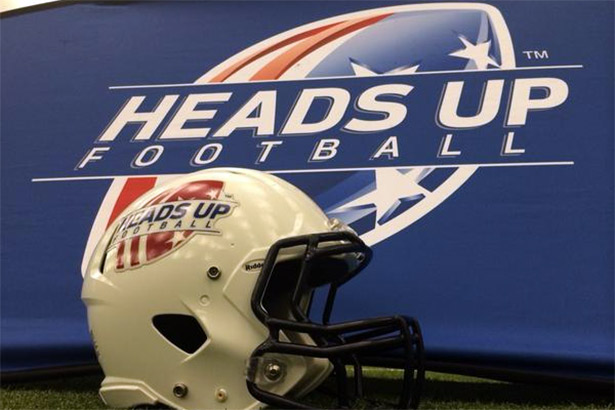Helmet Sensors Try to Answer if Football Can Ever Be Safe

Tags: USA
Helmet Sensors Try to Answer if Football Can Ever Be Safe published by Evanvinh
Writer Rating: 5.0000
Posted on 2016-03-19
Writer Description: Evanvinh
This writer has written 733 articles.
Byline: Chris Weller
The hit Aaron King remembers wasn't the kind of helmet-knocking that gets soothed with an orange slice. It was the kind that leaves you waking up confused about why your teammates all have worried looks on their faces. It was the first day of football practice at the University of Texas at El Paso. King, fresh off an all-state career in high school, got whacked. "I'll never forget it," King says, "because I'd never been hit like that before."
He went on to play four years of college football, regularly receiving and delivering similar hits. They all hurt, but most of the time he could forget about them. It wasn't until 2010, as a professional, that he suffered his first officially diagnosed concussion. His second came a year later, and it was followed closely by his decision to leave football forever. "I remember undressing, taking my pads off and doing it slowly because I knew that was the last time I was going to do it," he says. Now 30 years old and the co-owner of a marketing agency, King still struggles with residual effects of his days as a football player. Brain damage has left him with blurry vision in his left eye, and sometimes he sees double. As part of the workers' compensation he receives from the United Football League, his former employer, he's been given glasses with corrective lenses, but King says he still isn't fully healed. He may never be. "You feel like you don't have access to your entire brain."
If King's story sounds familiar, it's because football has consistently had issues with head injuries at just about every level. For the scientists collecting data hit by hit, scan by scan, the question isn't, "Is football dangerous?" The real question is, "Can football ever be safe?"
That crucial question can't be answered yet, because when it comes to traumatic brain injury (TBI), neuroscience still only see part of the picture. Even the most advanced imaging techniques can't differentiate between a damaged brain that needs treatment and a damaged brain that can be left alone. Dr. Itai Weissberg, who studies TBI at Ben-Gurion University (BGU), says the same hit delivered to two players can leave one with partial brain damage and the other unscathed. Figuring out why demands direct observation on a molecular level, an ability that has so far eluded scientists. Fortunately, they may have found a way in.
"Imagine that after a year of playing football we can send kids to a simple MRI scan that will tell which one has a tendency for damage and shouldn't play," Weissberg says. Last year, the BGU researchers published a small study, "Imaging Blood-Brain Barrier Dysfunction in Football Players," in JAMA Neurology describing a novel form of dynamic, contrast-enhanced MRI that senses changes in the blood-brain barrier (BBB), a protective layer between the brain and the rest of the body. In studying 15 football players and 12 track-and-field athletes, they found lesions, or openings, in the BBB of six of the football players, but in just one person in track. The most important fact here is that the technique found these disruptions before any physical changes appeared in the brain's anatomy. The team also found no correlation between BBB damage and concussion history, which underscores research that has repeatedly found concussions aren't the real culprit in long-term brain damage.
That distinction goes to subconcussive hits that don't sideline players but leave them the woozier for wear. Scientists know repeated subconcussive hits are damaging, just not how damaging or for how long. Many football players' greatest risks emerge only after they've retired, when other later-age risk factors begin to arrive and bring with them diagnoses of dementia, Alzheimer's disease, ALS and chronic traumatic encephalopathy. But without knowing which hits played the biggest part in triggering these diseases, doctors and scientists can't take meaningful steps toward prevention.
In 2013, scientists looking at the brains of five living NFL players with emotional and cognitive impairment found trace deposits of tau, one of the proteins most commonly found in Alzheimer's patients post-mortem. Seeing it in live athletes, in real time, is the holy grail of brain injury research, according to Dr. Julian Bailes, neurosurgeon and director of the Brain Injury Research Institute. This was a landmark find for neuroscience, but it didn't solve the preventive diagnosis problem. By the time tau has accumulated, the damage is already done.
In 2013, football helmet manufacturer Riddell launched a piece of technology called InSite, tinysensors in practice helmets that show coaches to just how hard their players were getting tackled--some sustaining blows to the head at forces equivalent to car crashes. InSite takes the data a step further, says Thad Ide, senior vice president of research and development at Riddell. It creates unique profiles for each position, and it further calibrates the strength of the hit to the age of the athlete. Ideally, the technology will migrate into neuroscience labs to get even smarter; Riddell has partnered with the Translational Genomics Research Institute, in Phoenix, to look at "how impacts affect brain biomarkers and brain chemistry," Ide says, "and understand how types of impacts might be able to be used to quantify whether a player has been concussed."
That one-two punch is crucial. Without force readings, scientists can't know which hits were the most devastating. Without brain scans, players and coaches are just left with raw data. But using both streams of information could get at-risk players off the field and prescribe the proper amount of rest to minimize future damage.
In the meantime, parents, coaches, schools, equipment manufacturers and government agencies are all actively working to make the game safer. The Centers for Disease Control and Prevention recently released formal guidelines to Congress outlining the safest way to avoid, treat and recover from head injury. Participation rates in Pop Warner football fell nearly 10 percent between 2010 and 2012, according an ESPN report, in which Bailes, who is Pop Warner's chief medical officer, credited head injury fears as the primary cause of the decline. Even President Obama says that if he had a son, he wouldn't let him play college football.
Many NFL athletes, despite having invested nearly two decades of their lives in the pursuit of professional stardom, are rethinking their career goals. San Francisco 49ers linebacker Chris Borland recently retired at 24, with just one season under his belt, over fears of brain injury. Several other players, none older than 30, have taken the same path. Then there are the 4,500 ailing retirees who, in 2011, sued the NFL over a perceived negligence to warn them of the sport's risks. The judge presiding over the lawsuit, U.S. District Judge Anita Brody, recently finalized the settlement: Over the next 65 years, all retired NFL players can receive baseline medical exams, education services and a payout formula based on illness and age.
The outstanding question is whether the sport is beyond repair--is football simply too dangerous to play, or can a careful alchemy of technique, league regulation and scientific know-how protect the 3-pound glob of tissue that sits between athletes' ears? The NFL has taken steps to make the game safer. In 2010, it began fining players for tackling headfirst. A few years later, it expanded the rule on unnecessary roughness to protect so-called "defenseless" players: receivers stranded in the middle of the field, players on the ground at the end of a play, punt returners and quarterbacks.
The tactics seem to be making a difference. The NFL reported a 25 percent reduction in the number of concussions from 2013 to 2014, and a 36 percent reduction from 2012. But there is a ceiling to how effective punitive measures will be in directing the actions of athletes with a deeply ingrained sense of competition, and strong financial incentive to stay in the game.
Weissberg's research could change the equation for everyone. If his team can figure out how reliable the BBB is in predicting a player's risks for more insidious long-term TBI, they could have a real-time brain-damage predicting tool. "After a big hit we [could] scan the player and say, 'Your BBB is still open, you should rest for another week,'" he says.
The legal ramifications of this kind of innovation could be huge, says NFL agent Anthony Caruso: The league would have less room to claim ignorance, and it would be able (and, perhaps, legally obligated) to take a more active role in protecting players. "The question becomes, from a legal standpoint, suppose they fully know the dangers," Caruso said. "Suppose the NFL gives everybody a pamphlet when they're drafted" that spells out all of the risks involved. "Then what?"
For college athletes on the brink of making it big, that could mean a more informed decision. King, of course, wishes the science had been further along when he started playing. His career-ending tackle was in accordance with today's safety standards. He followed the rules, and he got hurt anyway. "It was basically a constant debilitating migraine that took your cognitive abilities with it," he said of the concussion's long-term damage. "I basically wanted to blow my brains out."
After many months of treatment, the creativity he once enjoyed is finally coming back. He no longer has to take hour-long breaks at work to let his migraines pass. But every now and then a bad day bubbles up, and even with his corrective lenses, his vision can blur. "It's a very complex, dark reality for people that go through post-concussion syndrome," he says, but he doesn't hold any grudges against the game. It was a major part of his life--until it wasn't.
Chris Weller
Sources: http://go.galegroup.com.db24.linccweb.org/ps/retrieve.do?sort=DA-SORT&docType=Article&tabID=T003&prodId=PPCM&searchId=R8&resultListType=RESULT_LIST&searchType=BasicSearchForm&a
You have the right to stay anonymous in your comments, share at your own discretion.


